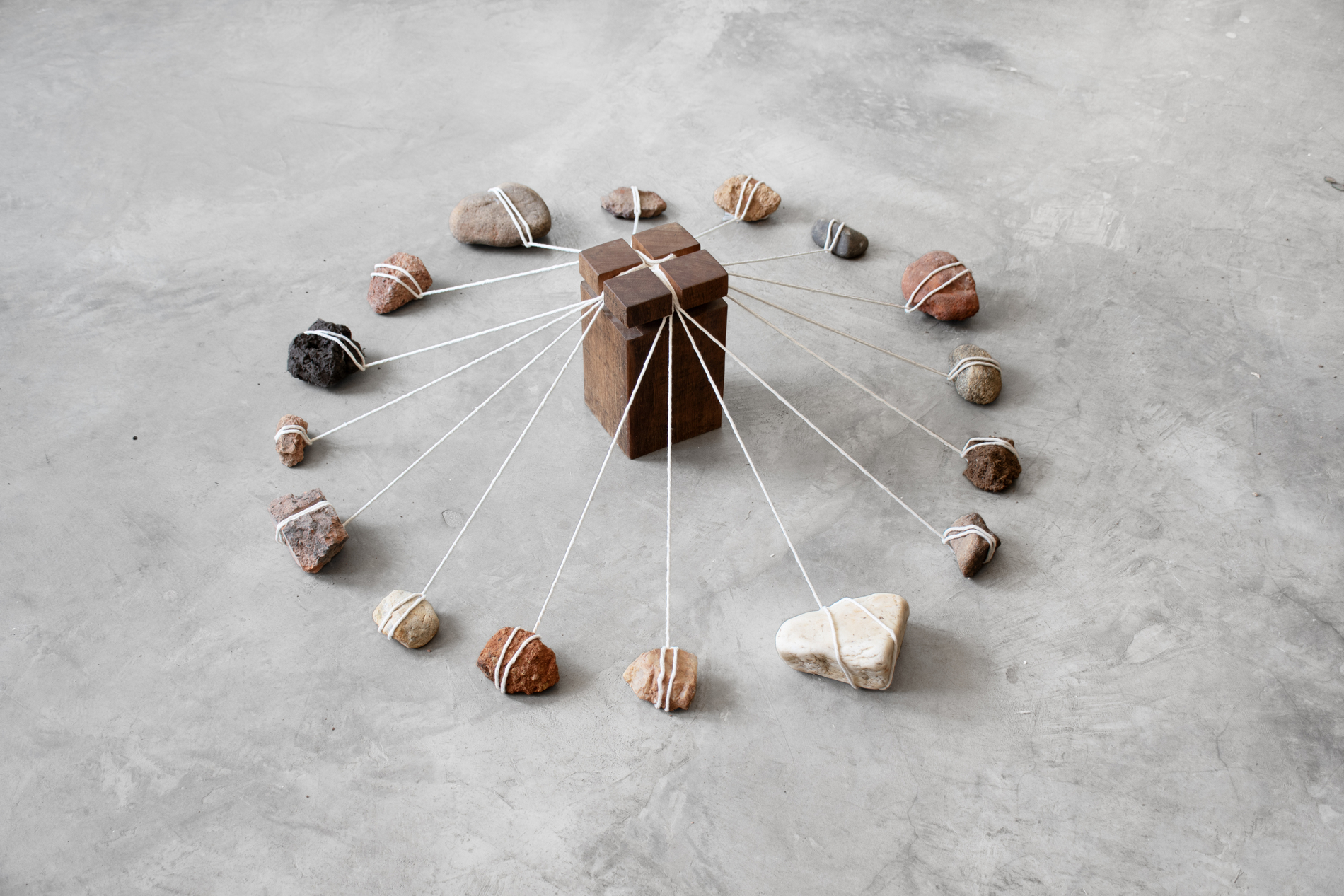Mônica Ventura e Deco Adjiman
October 19 to
November 23, 2024
Luis Maluf Galeria
Rua Peixoto Gomide, 1887
Jardins, São Paulo, SP
De tudo fica um pouco
[A bit of everything remains]
Mônica Ventura and Deco Adjiman
“A little remains oscillating
at the mouths of rivers
and the fish don’t avoid it,
a little: it’s not in the books”
(Excerpt from the poem Resíduos,
by Carlos Drummond de Andrade)
Discussing time and the origin of ourselves and everything around us is an arduous task. Before a chronology, time is an anthology, a landscape inhabited by the body, a journey before progression, a way of predisposing beings in the cosmos. It is about the passage of this time, its intertwining with ancestry and its inevitable relationship with the transformation of matter that the dialog contained in De tudo fica um pouco, an exhibition that brings together a cross-section of the prolific artistic production of Mônica Ventura and Deco Adjiman, on show at Galeria Luis Maluf, is about.
In this sphere, such an understanding meets the reflections of poet and essayist Leda Maria Martins and her concept of spiral time, a perception that intertwines the idea that the past inhabits the present and the future, which means that events, stripped of a linear chronology, are in the process of a perennial metamorphosis and, concomitantly, correlated. Thus, experiencing time means inhabiting a curvilinear temporality, conceived as a scroll that simultaneously seals and reveals, rolls up and unrolls the temporal instances that make up the subject. This temporal union is revealed in the work of both artists in question. Through his brush and the three-dimensional forms he builds, Ventura seeks to amplify his ancestral history. He harks back to Afro-Amerindian cosmogonies, connecting myths and past references and transporting them to the present day. Adjiman, on the other hand, makes the journey his temporal expansion. And on this journey, the artist collects, assembles and constructs narratives imbued with poetry to talk about the various possible paths in the world.
The exhibition route is punctuated by a series of large oil paintings by Mônica Ventura. Entitled Alteia (I, II and IV), from 2024, the works have contours that remind us of the Zangbetos, voodoo guardians of the night in Yoruba cults. These spirits move through music and protect the beings around them. The ancestral spiritual relationship that emerges in Ventura’s paintings permeates his entire production. Whether in two- or three-dimensional form, the artist anthropomorphizes her language, leading us to question the forms and stereotypes we inhabit and replicate. At another point, Ventura welcomes us with her recognizable gourds on which she draws cosmogonic narratives that symbolize the beginning of everything and replicate symbologies from human history.
If the past is the place of accumulative knowledge and experience, which consequently inhabits the present and the future, Deco Adjiman accesses this ancestry by touching the earth. His works each find the time of things in order to highlight the possible dimension to be reached during the journey. Measuring the temporality of this experience can be seen in works such as Travessia or the seven days or 183 kilometers on the floor of Rosa, from 2024. With wood, iron, string and earth, the artist produced what symbolizes his passage through the backlands of Minas Gerais, one of the routes taken by Riobaldo, the central character in João Guimarães Rosa’s classic Grande Sertão: Veredas. Collecting the traces that represent our experience and passage through this world is also in Coleção de Chão, from 2021. The work, made up of 54 small jars with different sedimentary compositions, encourages reflection on the uniqueness of each space, but the charm of its composition as a single floor. The piece is accompanied by an essay written by the artist, in which he muses on the definitions of territory.
Literature and, consequently, words are an essential part of Adjiman’s process, as well as the final object of his work. Verses are contained explicitly or delicately inserted subjectively throughout his work. In Cadernos de andaleço III, he transcribes phrases found in books and publications that have marked his experiences, as well as some created by the artist himself. In De tudo fica um pouco, from 2024, Adjiman transforms the classic encyclopedias, now forgotten, into other lives, inserting dried leaves collected from the surroundings into the pages. If, as Gaston Bachelard (1884-1962) reminds us, man will wonder indefinitely what mud, earth or clay he himself is made of, here we present a handful of spaces, cosmologies and interpretations that mix the possibilities of being in a spiral time. And from all this, a little bit of us remains in the world.
— Ana Carolina Ralston
